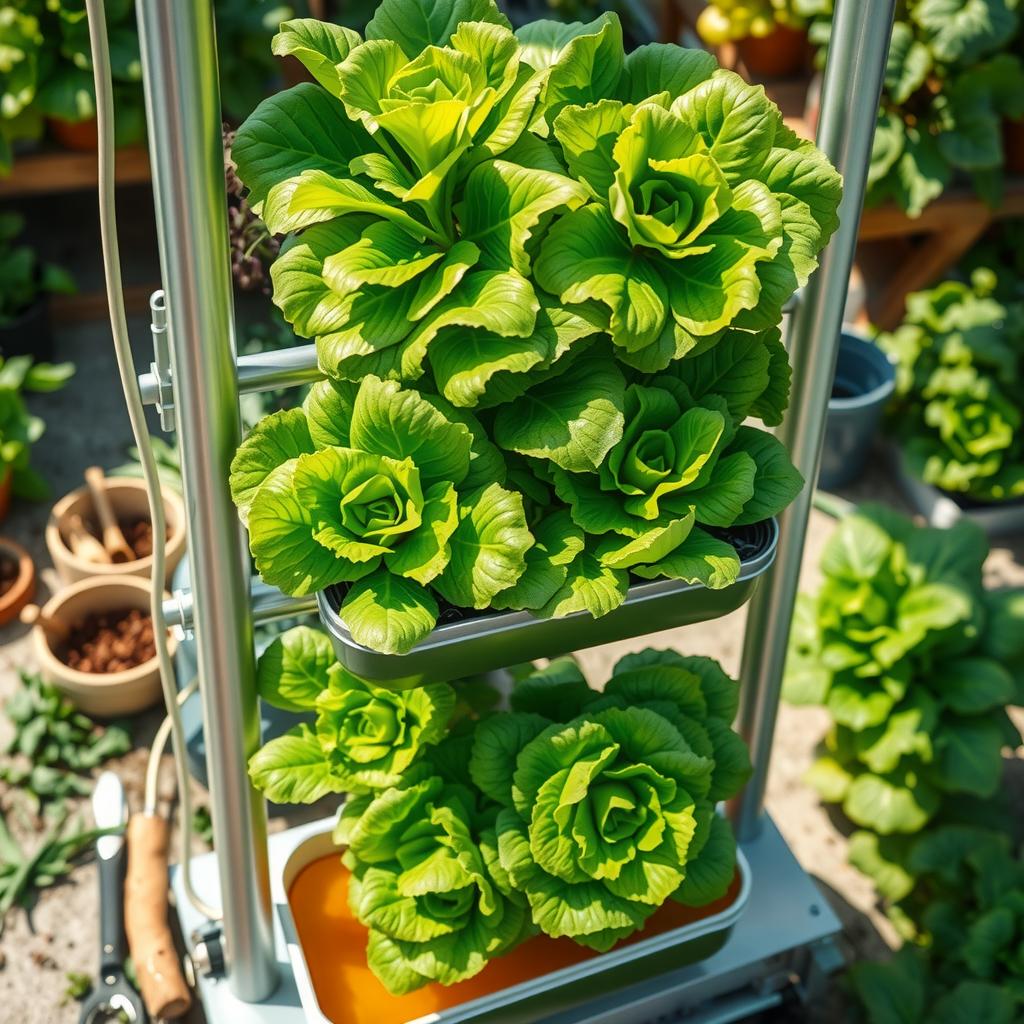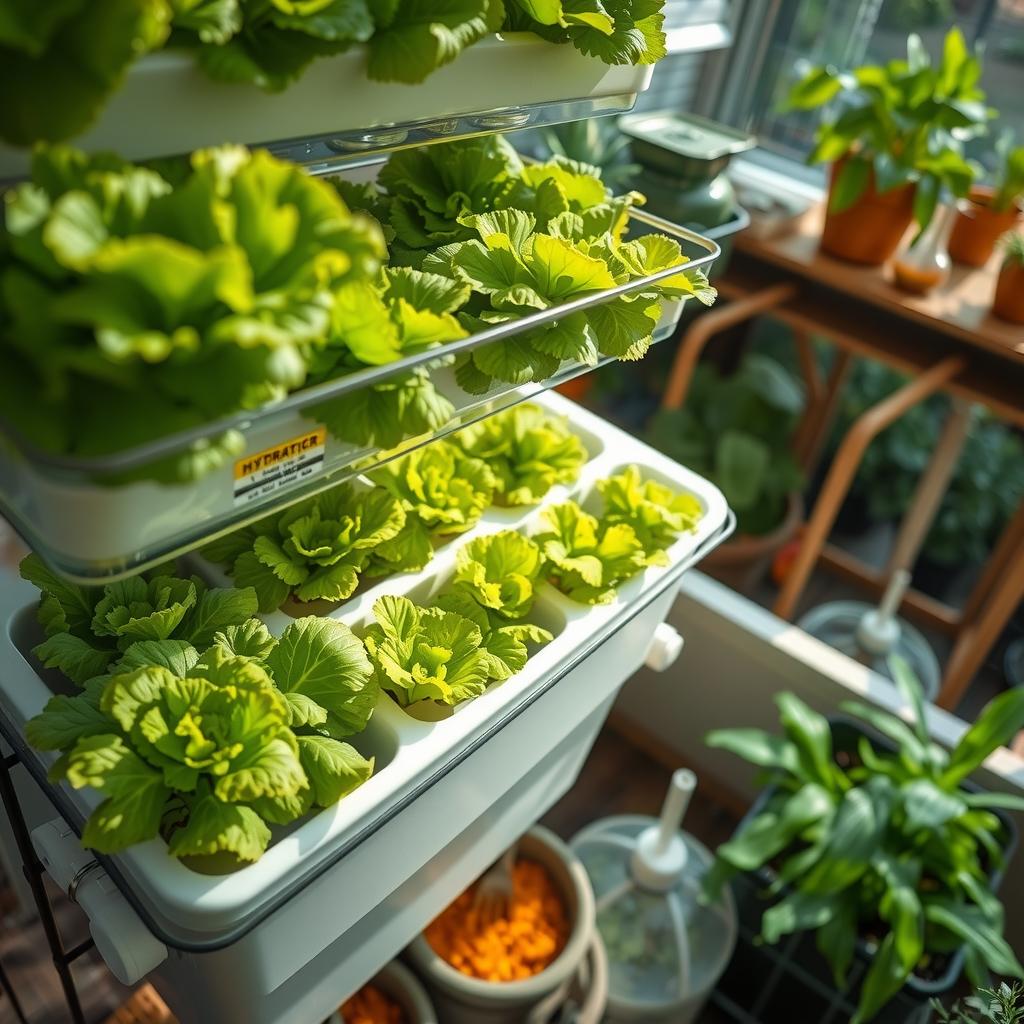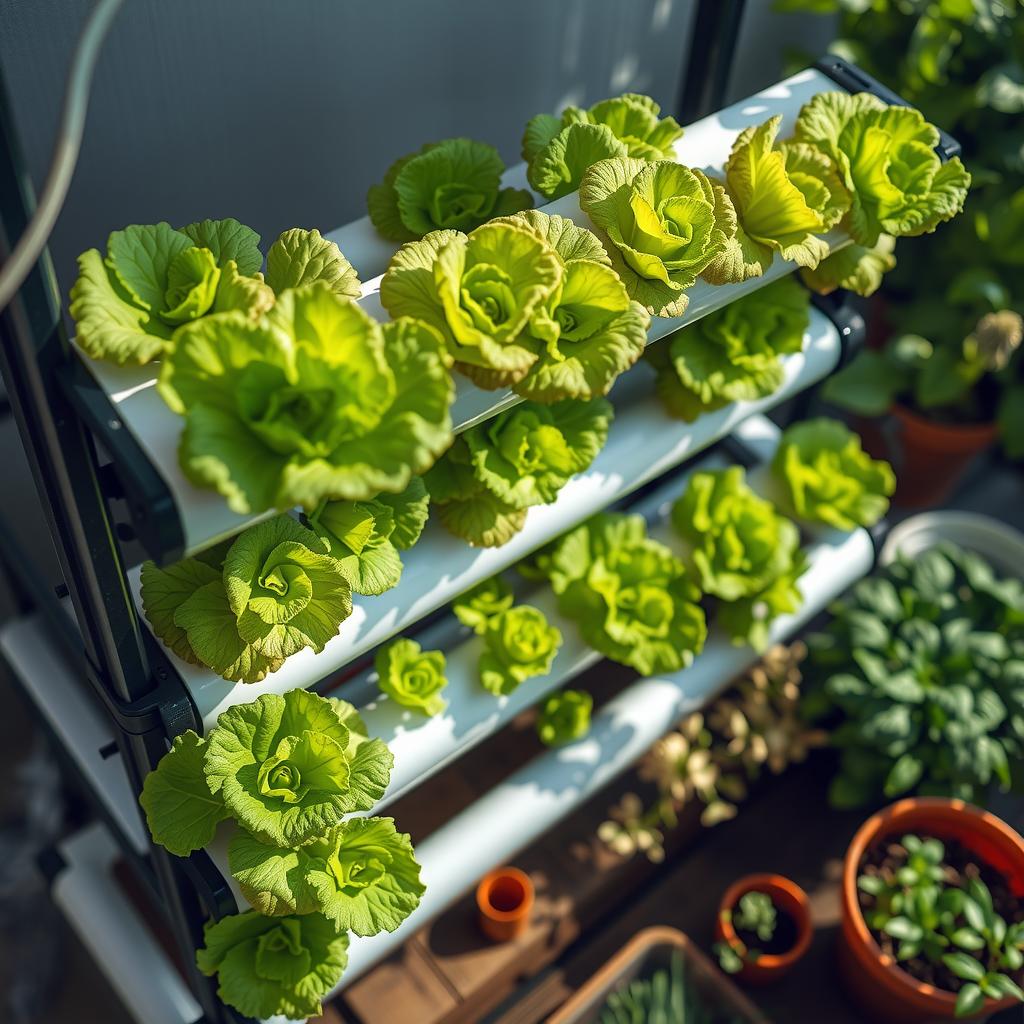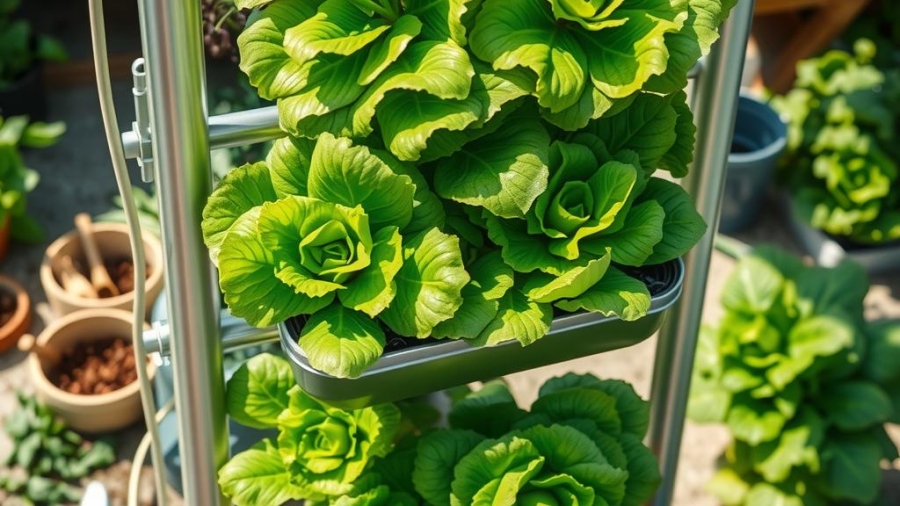In an era where food sustainability and quality are increasingly at the forefront of consumer concerns, the quest for fresh produce often leads to innovative solutions. One such solution is the rise of hydroponic systems, particularly for growing Hydroponic lettuce. Traditional farming methods face numerous challenges, including soil degradation, climate variability, and limited arable land. These issues not only threaten crop yields but also compromise the nutritional value of what we consume. Enter indoor gardening techniques that harness controlled environments to cultivate crops year-round—transforming how individuals think about their food sources.
Setting up a hydroponic lettuce growing system offers a sustainable alternative that effectively addresses these modern agricultural dilemmas. By utilizing nutrient-rich water instead of soil, this method allows for accelerated plant growth while minimizing resource waste—a crucial factor in today’s eco-conscious world. Imagine being able to harvest crisp, flavorful lettuce from your home or community garden without reliance on pesticides or long transport times from distant farms! This blog post will delve into the essentials of establishing a successful hydroponic system, focusing specifically on hydroponic lettuce as a prime candidate due to its rapid growth cycle and high market demand.
The article aims to provide readers with comprehensive insights into setting up their own hydroponic systems tailored for optimal lettuce growing results. It will cover everything from selecting the appropriate equipment and nutrient solution to understanding effective crop management strategies essential for enhancing plant health in an indoor environment. In addition to practical guidance, it will explore various vertical farming setups that maximize space efficiency—an attractive prospect for urban dwellers looking to embrace self-sufficiency.
As we navigate through this informative guide on creating your own hydroponic lettuce garden, readers can expect valuable tips rooted in sustainable farming practices that promote environmental stewardship while satisfying culinary desires. The journey toward becoming proficient in indoor gardening starts here; let’s uncover how simple adjustments can lead toward thriving crops right within reach!

Key Points:
-
Essential Components for Success: Understanding the fundamental elements required for a thriving hydroponic lettuce system is crucial. This includes selecting appropriate containers that facilitate water retention, ensuring ample light sources for effective photosynthesis, and maintaining optimal pH levels in the nutrient solution. Each of these components plays an integral role in crop management, providing the necessary environment for hydroponic lettuce to flourish without interference from weeds or other plant competitors typically found in soil-based gardening.
-
Vertical Farming Techniques: The adoption of vertical farming techniques within indoor gardening can significantly enhance space efficiency while promoting rapid plant growth. By stacking layers of crops, growers can maximize their yield per square foot—an essential consideration when setting up a hydroponic system in urban areas where space may be limited. This innovative approach not only allows gardeners to cultivate fresh hydroponic lettuce but also contributes positively to sustainable farming practices by reducing land use.
-
Technological Integration: Embracing technology within the hydroponic setup can lead to more streamlined operations and improved outcomes. Automated systems that manage nutrient delivery and environmental conditions provide precise control over factors impacting lettuce growing. Such advancements ensure that each plant receives exactly what it needs at every stage of growth, fostering an environment conducive to producing high-quality crops while minimizing waste—a vital aspect of modern sustainable farming efforts.

The Evolution of Agriculture: Hydroponics Unleashed
Harnessing Innovation for a Sustainable Future
In the quest for sustainable farming, hydroponic systems have emerged as a revolutionary method that promises to reshape modern agriculture. Unlike traditional gardening methods, which rely heavily on soil and are often susceptible to environmental fluctuations, hydroponics utilizes nutrient-rich water solutions to foster plant growth. This innovative approach not only allows for hydroponic lettuce cultivation but also optimizes space through techniques like vertical farming. By eliminating the need for expansive land areas, hydroponic systems present an efficient alternative that is particularly advantageous in urban settings where arable land is scarce.
Furthermore, indoor gardening facilitated by hydroponic technology can lead to year-round crop production regardless of external climatic conditions. With controlled environments tailored specifically for optimal plant growth, farmers have greater flexibility in managing their crops—ensuring consistent yields of fresh produce such as hydroponic lettuce right at their fingertips. As water conservation becomes increasingly vital in agricultural practices worldwide, it is worth noting that hydroponics requires significantly less water than traditional soil-based farming methods; studies suggest up to 90% less usage due to the closed-loop system employed.
Maximizing Efficiency Through Precision
The precision offered by hydroponic systems dramatically enhances crop management capabilities while simultaneously boosting yield quality and quantity. Nutrient solutions can be meticulously formulated and monitored based on specific plant requirements—allowing growers not just to cultivate hydroponic lettuce, but also various other crops with varying needs without compromising efficiency or nutritional value.
Moreover, this level of control enables faster growth cycles; plants grown in these optimized environments can reach maturity more quickly compared with those cultivated through conventional means where factors such as soil health and weather unpredictability play significant roles. A well-managed hydroponics setup can deliver produce ready for harvest within weeks rather than months—a game-changer amid rising global food demands.
Addressing Environmental Challenges
One cannot overlook how critical sustainable farming practices are becoming amidst growing concerns about climate change and food security challenges faced globally today. Hydroponics stands out as a viable solution that addresses these issues head-on by minimizing ecological footprints while maximizing output from limited resources.
For instance, since pests tend not to thrive in sterile environments devoid of soil ecosystems found in traditional gardens, there exists far less dependency on chemical pesticides—a boon both environmentally and health-wise when considering products like hydroponic lettuce consumed directly by consumers after minimal processing steps involved post-harvest.
Additionally, implementing renewable energy sources within these systems further boosts sustainability initiatives associated with them; solar panels could power LED lighting setups crucial during winter months or cloudy days—the perfect marriage between technology advancement combined with eco-friendly methodologies leading us toward greener futures.
Cultivating Community Engagement
As communities increasingly recognize the benefits derived from local sourcing through initiatives involving urban farms utilizing advanced technologies such as aquaponics or aeroponics alongside standard methodologies rooted deeply into our agricultural heritage – they find themselves drawn toward supporting local economies dynamically engaged around producing fresh foods available at markets near them daily including popular items like hydroponic lettuce.
This cultural shift towards embracing locally sourced food aids community resilience while promoting healthier lifestyles among residents keenly aware now more than ever about what goes onto their plates each day reflecting broader trends seen across society emphasizing transparency within supply chains ultimately benefitting everyone involved—from producers cultivating this delicious green goodness down through consumers savoring its crispness!

Key Components for a Successful Hydroponic Lettuce System
Selecting the Right Containers
When embarking on the journey of hydroponic lettuce cultivation, one of the primary considerations is choosing suitable containers. The container serves as a foundation for plant growth and plays an essential role in nutrient delivery. Opting for materials such as food-safe plastic or PVC can ensure that your hydroponic system remains durable while also being non-toxic to plants. It is beneficial to select containers that allow adequate drainage, preventing root rot and promoting healthy plant growth. For optimal results, many gardeners have found success using net pots, which not only support young seedlings but also facilitate aeration and water retention within the growing medium. These components collectively contribute to effective crop management strategies aimed at producing robust hydroponic lettuce.
Light Sources That Promote Growth
The importance of light in any indoor gardening setup cannot be understated; it is vital for photosynthesis and overall plant growth. In a hydroponic system dedicated to cultivating lettuce growing, growers often turn to LED grow lights due to their energy efficiency and ability to emit specific wavelengths conducive to plant health. Ideally, these lights should mimic natural sunlight with full-spectrum capabilities—ensuring young greens receive both blue light during vegetative stages and red light when approaching maturity. Growers are encouraged to maintain a consistent photoperiod; typically 14-16 hours of light per day suffices for optimum yield while minimizing energy consumption.
Maintaining Optimal pH Levels
Another critical aspect impacting successful hydroponic lettuce production lies in maintaining appropriate pH levels within the nutrient solution. The ideal range hovers between 5.5 and 6.5; deviations can lead directly to nutrient deficiencies or toxicities detrimental to crop performance in an indoor farming environment. Regular monitoring using reliable pH meters allows growers not only insight into their systems but also informs adjustments needed with buffers or amendments tailored specifically for lettuce’s nutritional needs. This diligence contributes significantly toward sustainable farming practices by ensuring each batch thrives under controlled conditions—a hallmark feature of proficient vertical farming techniques.
Nutrient Solutions: Feeding Your Plants
Finally, understanding how nutrient solutions function within a hydroponic system is paramount when cultivating healthy hydroponic lettuce. These solutions must contain essential macro-nutrients like nitrogen (N), phosphorus (P), potassium (K) along with micro-nutrients crucially influencing every stage from germination through harvest timeframes—all contributing towards optimizing overall yield quality throughout various phases of development cycles inherent in modern agricultural practices today! By utilizing pre-mixed commercial formulations tailored specifically toward leafy crops such as lettuces alongside regular assessments concerning water quality parameters—including conductivity—growers will find themselves well-equipped toward achieving thriving vegetation across diverse settings efficiently!
Embracing Technology in Hydroponic Gardening
The Future of Sustainable Farming is Here
In the realm of indoor gardening, technology plays a pivotal role in enhancing efficiency and optimizing crop yields. Automated systems have emerged as essential tools for streamlining nutrient delivery and environmental control, particularly beneficial for cultivating hydroponic lettuce. These advanced hydroponic systems utilize sensors and algorithms to monitor critical growth parameters such as pH levels, temperature, humidity, and light intensity. By ensuring that plants receive the precise amount of nutrient solution needed at each stage of their growth cycle, these automated solutions significantly improve plant health and productivity.
One notable advantage of embracing automation in hydroponics is its ability to reduce human error—a common challenge faced by traditional growers. For instance, when managing a vertical flow system designed for hydroponic lettuce, the integration of real-time data analytics allows growers to make informed decisions quickly. This level of precision not only accelerates plant growth but also minimizes resource wastage; thus promoting sustainable farming practices that align with modern ecological standards.
Moreover, automated environmental controls can adaptively respond to fluctuations in external conditions—such as changes in ambient temperature or light availability—ensuring optimal growing environments year-round. As noted by industry experts: “The future belongs to those who harness technology effectively.” In this context, utilizing smart watering schedules based on moisture detection sensors ensures that crops receive adequate hydration without over-saturation—a crucial factor for successful lettuce growing.
Furthermore, crop management becomes more straightforward with these innovative technologies; growers can remotely access data from their hydroponic systems via mobile applications or web platforms. This connectivity enables them not only to monitor plant health but also adjust settings instantly from anywhere around the globe. For example, if an anomaly arises within a batch of hydroponic lettuce, immediate action can be taken before significant losses occur.
As interest grows around sustainable food production amidst global challenges like climate change and urbanization pressures on agricultural land use increase dramatically; it becomes clear that adopting such technological advancements will be vital for meeting future food demands efficiently while respecting our natural resources. Thus investing in automated hydroponics represents more than just an enhancement—it signifies a commitment towards smarter agriculture capable of feeding an ever-growing population sustainably.
FAQ:
Q: What is hydroponic lettuce growing?
A: Hydroponic lettuce growing involves cultivating lettuce plants in a soil-less environment, using nutrient-rich water solutions to deliver essential nutrients directly to the roots. This method maximizes space and promotes faster plant growth while minimizing common issues faced in traditional gardening.
Q: How can I set up a hydroponic system for my indoor gardening?
A: Setting up a hydroponic system for lettuce growing requires several key components. Start by selecting appropriate containers that retain water effectively. Ensure you have adequate light sources, like grow lights, to facilitate photosynthesis. It’s also crucial to monitor pH levels in your nutrient solution regularly, as this ensures optimal conditions for plant growth.
Q: What are the benefits of vertical farming in hydroponics?
A: Vertical farming enhances the efficiency of hydroponic systems by allowing growers to maximize limited space, especially beneficial for urban indoor gardening setups. By stacking plants vertically, gardeners can increase their crop yield without requiring more horizontal land area while also simplifying crop management and improving accessibility during maintenance tasks.
